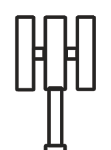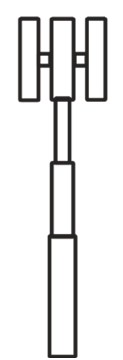Deep learning provides powerful means to learn from spectrum data and solve complex tasks in 5G and beyond such as beam selection for initial access (IA) in mmWave communications. To establish the IA between the base station (e.g., gNodeB) and user equipment (UE) for directional transmissions, a deep neural network (DNN) can predict the beam that is best slanted to each UE by using the received signal strengths (RSSs) from a subset of possible narrow beams. While improving the latency and reliability of beam selection compared to the conventional IA that sweeps all beams, the DNN itself is susceptible to adversarial attacks. We present an adversarial attack by generating adversarial perturbations to manipulate the over-the-air captured RSSs as the input to the DNN. This attack reduces the IA performance significantly and fools the DNN into choosing the beams with small RSSs compared to jamming attacks with Gaussian or uniform noise.
翻译:为了在基站(例如,gNodeB)和用于定向传输的用户设备(UE)之间建立IA,一个深神经网络(DNN)可以预测最能倾斜于每个UE的光束,方法是利用从可能的窄光束子组接收到的信号强力(RSS),同时提高选择波束的宽度和可靠性,而传统的IA则负责扫清所有光束,DNN本身很容易受到对抗性攻击。我们提出对抗性攻击,通过产生对抗性干扰来操纵从空中捕获的 RSS 作为DNN的输入。这次攻击大大降低了IA的性能,使DNN用小光束选择光束,而用Gaussian或统一噪音干扰攻击。





















